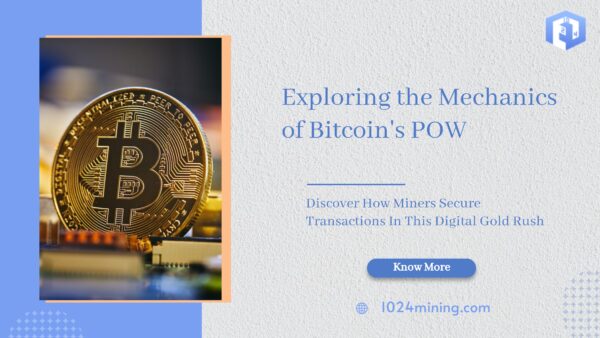Bitcoin’s Proof of Work (PoW) is a crucial aspect of the cryptocurrency’s underlying technology. It is the mechanism that ensures the security and integrity of the Bitcoin network. In this blog post, we will delve into the details of Bitcoin’s PoW, exploring how it works, its advantages and disadvantages, and its role in the broader context of blockchain technology.
Understanding Proof of Work
What is Proof of Work?
Proof of work is the process of validating transactions on a blockchain to confirm transactions, close a block, and open a new one.
How Does Proof of Work Work?
- Step-by-step explanation of the process
- The role of miners in solving complex mathematical puzzles
- The importance of computational power and difficulty adjustment
Advantages of Proof of Work
Security and Resistance to Attacks
- How PoW ensures the immutability of the blockchain
- Protection against double-spending and other fraudulent activities
Decentralization and Consensus
- How PoW enables a decentralized network
- The role of consensus in validating transactions
Disadvantages of Proof of Work
Energy Consumption and Environmental Impact
- The energy-intensive nature of PoW
- Criticisms regarding its carbon footprint
Centralization of Mining Power
- The concentration of mining power in the hands of a few players
- Potential risks and concerns
Alternatives to Proof of Work
Proof of Stake (PoS)
- How PoS differs from PoW
- Advantages and disadvantages of PoS
Other Consensus Mechanisms
- Brief overview of other consensus mechanisms, such as Delegated Proof of Stake (DPoS) and Practical Byzantine Fault Tolerance (PBFT)
Bitcoin’s Proof of Work has been instrumental in establishing the security and trustworthiness of the world’s first cryptocurrency. While it has its drawbacks, such as energy consumption and centralization concerns, it remains a vital component of the blockchain ecosystem. As the technology evolves, alternative consensus mechanisms like Proof of Stake may offer viable solutions to some of the challenges associated with PoW. Nonetheless, PoW continues to play a significant role in the ongoing development and adoption of cryptocurrencies.
The increasing acceptance of Bitcoin’s Proof of Work as a reliable consensus mechanism has led to its use in a wide variety of other applications. These range from smart contracts and distributed applications (DApps) to cryptocurrency exchanges, all of which rely on the secure and reliable foundation of PoW to ensure their security and trustworthiness. With the increasing prevalence of blockchain technology, PoW is likely to remain an integral part of the cryptocurrency landscape for years to come.
As the cryptocurrency space continues to develop and expand, the importance of Bitcoin’s Proof of Work (PoW) will continue to be a key component of the blockchain ecosystem. PoW is a reliable and secure consensus mechanism that enables the secure and trustless exchange of information on the blockchain. As more and more applications are built on the blockchain, PoW will remain a key factor in ensuring the security of these applications. Despite the challenges associated with PoW, such as energy consumption and centralization concerns, it remains a vital part of the blockchain and will continue to be a key factor in the ongoing development of the blockchain ecosystem.



